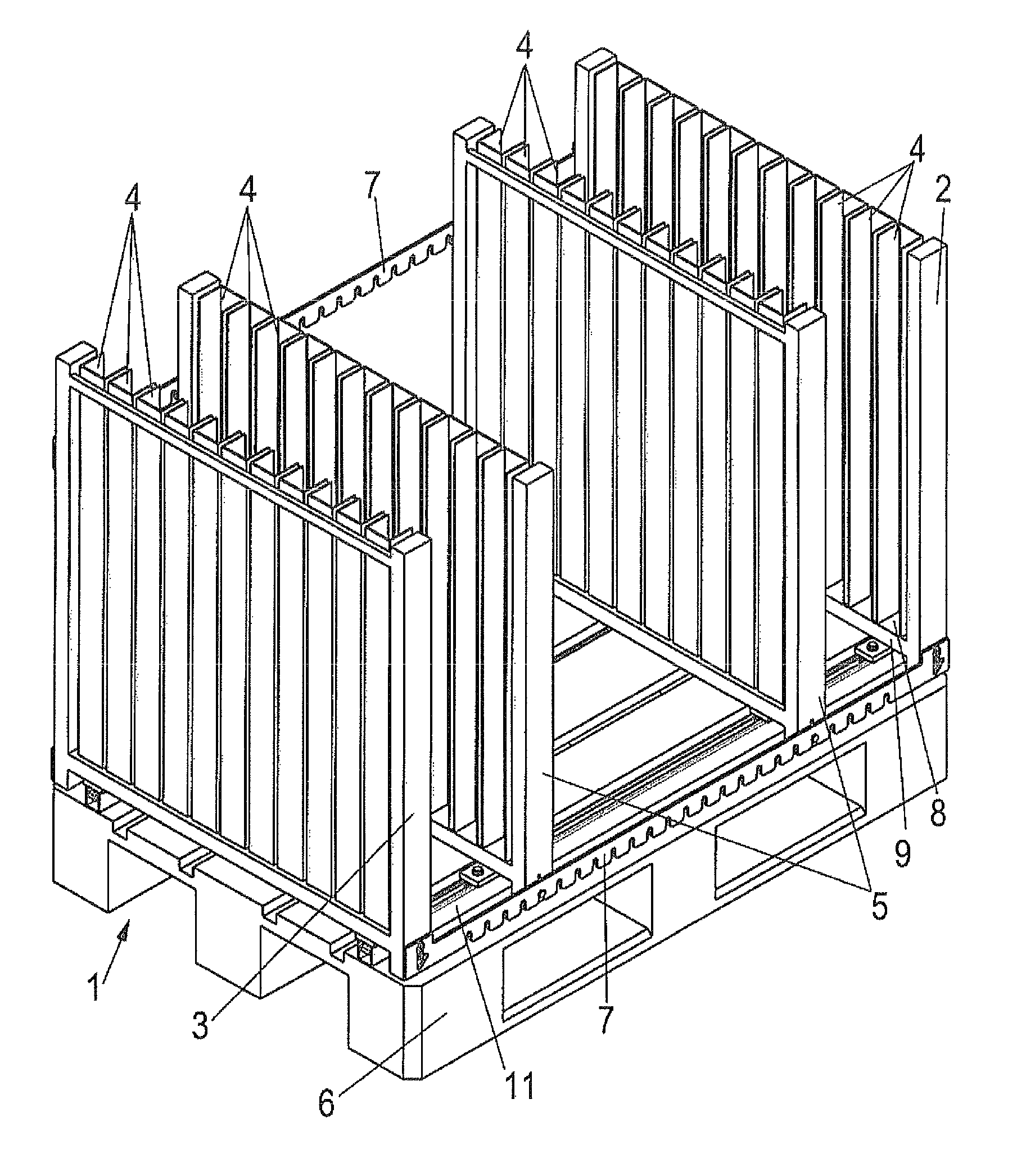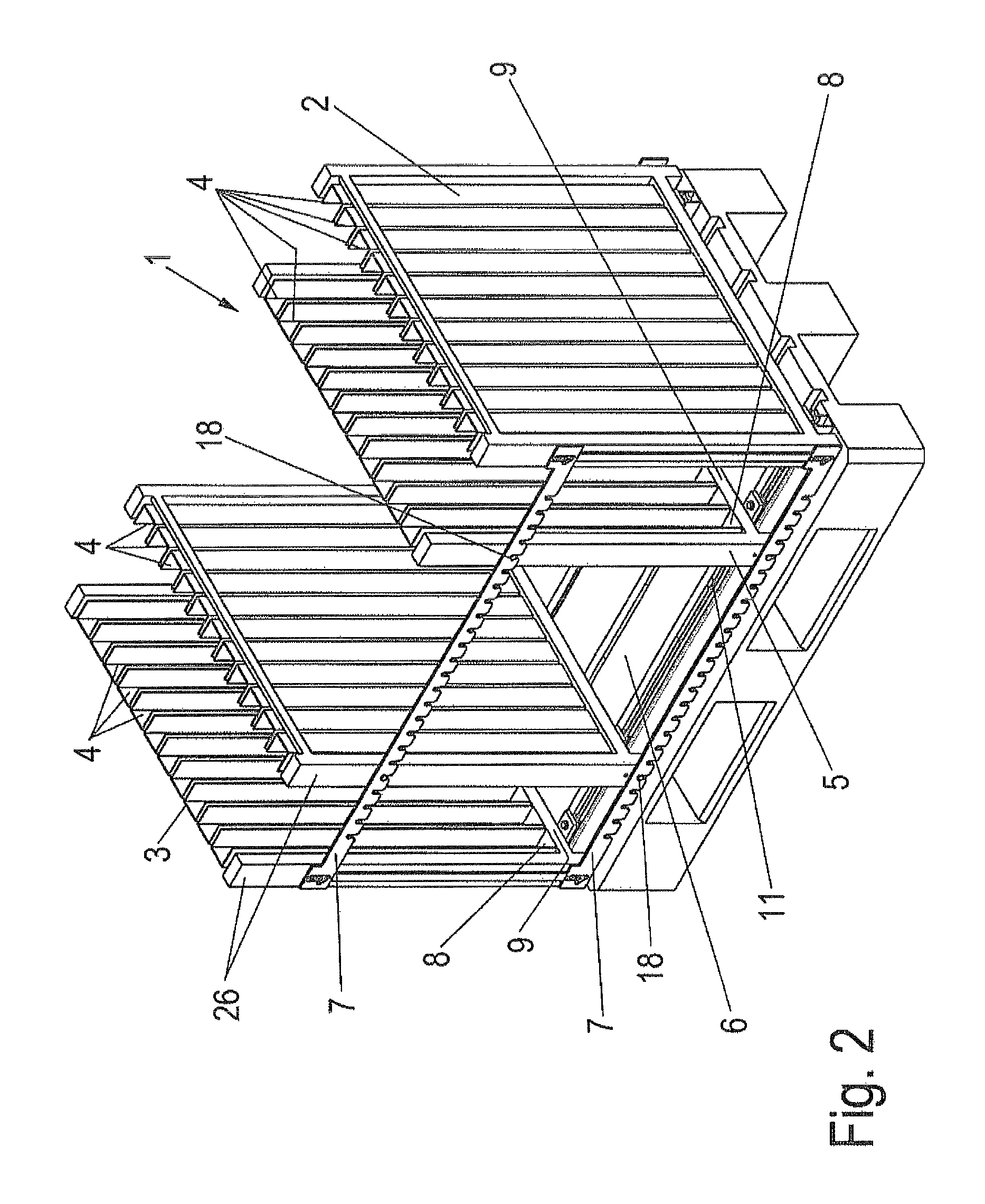Device for transporting objects
a technology for transporting objects and objects, applied in the field of transporting objects, can solve problems such as difficult removal, damage to objects, and disordered objects
- Summary
- Abstract
- Description
- Claims
- Application Information
AI Technical Summary
Benefits of technology
Problems solved by technology
Method used
Image
Examples
Embodiment Construction
[0023]A device 1 for storing and transporting objects is substantially configured to be rectangular and comprises at opposite end faces outer walls 2 and 3, on which a plurality of receiving hoppers 4 are formed. Two wall sections 5 are provided between the outer walls 2 and 3, and which are mounted displaceably on the floor side. The wall sections 5 also have receiving hoppers 4 on one side or on both sides, which are disposed opposite the receiving hoppers 4 on the outer walls 2 and 3. As a result, an object, for example, a profile rail, can be inserted with a first end section in a receiving hopper 4 on an outer wall or 3 and with a second end section in a receiving hopper 4 on a wall section 5. The receiving hoppers 4 are formed by U-shaped profiles so that the end sections of the object are arranged in a protected manner.
[0024]The floor of the device 1 comprises a pallet 6 which is configured as a standardized Euro pallet and on which two rails 11 are mounted, which are spaced ...
PUM
 Login to View More
Login to View More Abstract
Description
Claims
Application Information
 Login to View More
Login to View More - R&D
- Intellectual Property
- Life Sciences
- Materials
- Tech Scout
- Unparalleled Data Quality
- Higher Quality Content
- 60% Fewer Hallucinations
Browse by: Latest US Patents, China's latest patents, Technical Efficacy Thesaurus, Application Domain, Technology Topic, Popular Technical Reports.
© 2025 PatSnap. All rights reserved.Legal|Privacy policy|Modern Slavery Act Transparency Statement|Sitemap|About US| Contact US: help@patsnap.com



